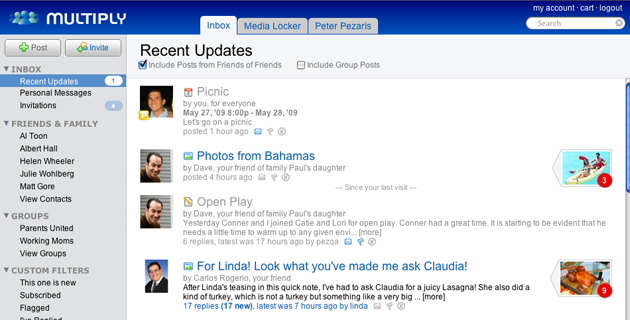8 Social Media Sites That Didn’t Survive
Nov 5, 2016 • Gabriela Lee

Nov 5, 2016 • Gabriela Lee
The grand daddy of them all, Friendster had all the hallmarks and features of the nascent social media website: profile pages, social connectivity, and ease of use. Plus, you could personalize your page! The sparkly, glittery website was full of high school friends, random stalkers, and people who could afford an Internet connection in the late 1990s.
Status: Inactive, as of June 14, 2015.
Although it didn’t really take off in the Philippines, MySpace had a loyal following in the US and the UK. Emo-grunge teens used the site to express their angst, make and promote their music, and decorate their personal pages with bad HTML codes. But everyone had to grow up sometime – and ended up on Facebook.
Status: Sold to the tune of US$35 million in 2011 and rebranded as a “music and culture” website.
Billed as a real-world social networking site, Multiply began as a place to share your own media to your real-life friends. However, online vendors were quick to capitalize on the image-heavy site, and in 2012, Multiply switched over to e-commerce completely.
Status: Inactive, as of May 31, 2013.
If you were part of an online fandom (hi fellow X-Philes!) in the late 1990s and early 2000s, you probably had a LiveJournal account, and read a lot of fanfic on it. Online communities and political news writers thrived on LiveJournal, with its customizable privacy features and easily tweaked codes.
Status: Bought by a Russian media company in 2007, and still has over 20 million monthly visitors as of 2013.
Plurk began as a real-time micrblogging site, where people could respond to other users within the screen, either in public or in private. It also had its own emojis and stickers to complement the 210-character plurks.
Status: 40% of the traffic on the site comes from Taiwan, using it as an alt-Twitter. MSN China tried to copy Plurk’s code and market it as MSN Juku.
One of the oldest social media sites at 17 years old, Xanga began as a photo-sharing and upload website used mainly by photographers and graphic designers. Eventually, it branched out into micro-blogging, social media, and even a premium version with unlimited uploading capabilities. Sadly, it also attracted a lot of security issues and plagiarism problems.
Status: Quietly launched Xanga 2.0 in 2013. The website talks casually about its experiences with DdoS attacks and other security breaches.
If you wanted to be an artist in the early 2000s, you probably opened up an account on DA and uploaded your Slam Dunk or Ghost Fighter fanart as part of your portfolio. The site has now expanded to incorporate blogs, polls, and community groups.
Status: Still growing strong! As of October 2016, DA had over 44 million global unique hits. It’s still being plagued by pesky plagiarism and copyright issues, though.
The recently-deceased Vine was a mobile app that allowed users to upload six-second looping videos, and share them on other sites like Facebook and Twitter. The format was mainly used by budding video enthusiasts, comedians, and YouTubers looking for an alternative way to reach their audiences.
Status: Though they had over 200 million users by 2015, Twitter recently announced that they would discontinue the service in 2016.
Know of any other social media apps that have gone the way of the dinosaurs? Share them with us below!
Input your search keywords and press Enter.
